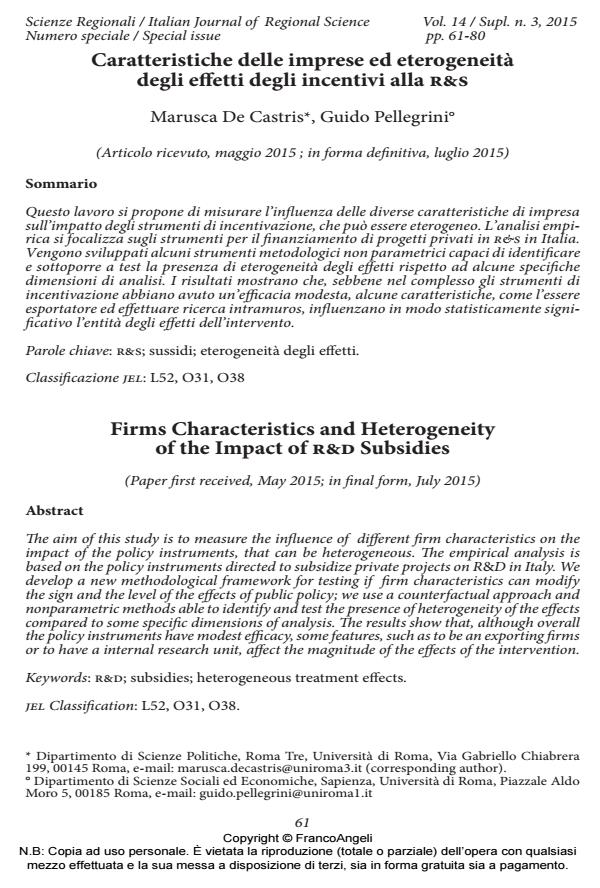Caratteristiche delle imprese ed eterogeneità degli effetti degli incentivi alla r&s
Titolo Rivista SCIENZE REGIONALI
Autori/Curatori Marusca De Castris, Guido Pellegrini
Anno di pubblicazione 2015 Fascicolo 2015/3 Suppl.
Lingua Italiano Numero pagine 19 P. 61-79 Dimensione file 193 KB
DOI 10.3280/SCRE2015-S03004
Il DOI è il codice a barre della proprietà intellettuale: per saperne di più
clicca qui
Qui sotto puoi vedere in anteprima la prima pagina di questo articolo.
Se questo articolo ti interessa, lo puoi acquistare (e scaricare in formato pdf) seguendo le facili indicazioni per acquistare il download credit. Acquista Download Credits per scaricare questo Articolo in formato PDF

FrancoAngeli è membro della Publishers International Linking Association, Inc (PILA)associazione indipendente e non profit per facilitare (attraverso i servizi tecnologici implementati da CrossRef.org) l’accesso degli studiosi ai contenuti digitali nelle pubblicazioni professionali e scientifiche
Questo lavoro si propone di misurare l’influenza delle diverse caratteristiche di impresa sull’impatto degli strumenti di incentivazione, che puo essere eterogeneo. L’analisi empirica si focalizza sugli strumenti per il finanziamento di progetti privati in r&s in Italia. Vengono sviluppati alcuni strumenti metodologici non parametrici capaci di identificare e sottoporre a test la presenza di eterogeneita degli effetti rispetto ad alcune specifiche dimensioni di analisi. I risultati mostrano che, sebbene nel complesso gli strumenti di incentivazione abbiano avuto un’efficacia modesta, alcune caratteristiche, come l’essere esportatore ed effettuare ricerca intramuros, influenzano in modo statisticamente significativo l’entita degli effetti dell’intervento.
Parole chiave:R&s; sussidi; eterogeneita degli effetti.
Jel codes:L52, O31, O38
Marusca De Castris, Guido Pellegrini, Caratteristiche delle imprese ed eterogeneità degli effetti degli incentivi alla r&s in "SCIENZE REGIONALI " 3 Suppl./2015, pp 61-79, DOI: 10.3280/SCRE2015-S03004